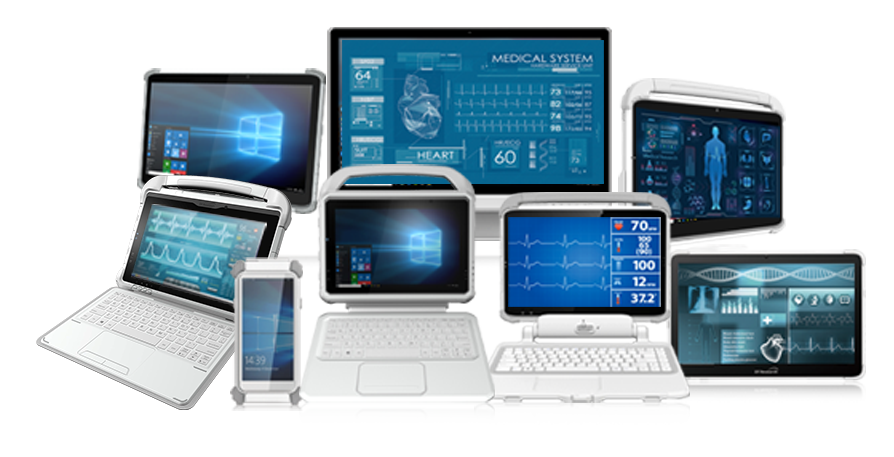
The healthcare industry is undergoing a digital revolution that is reshaping patient care through advanced technology. With improvements in cloud solutions, microprocessors, and device miniaturization, medical tablets are becoming essential tools for providers. By integrating peripherals and apps, tablets consolidate multiple devices into one, helping hospitals save time, money, and space.
But modernization doesn’t have to mean tearing everything down and starting fresh. With the right tools—like medical tablets and all-in-one (AIO) computers—healthcare organizations can bring their IT infrastructure up to date while still achieving long lifecycles and strong return of investment.
Long Lifecycles, Smart Investments
The fear that new technology will eventually be phased out is one of the most prevalent concerns with healthcare IT upgrades. But that’s where medical all-in-one computers and durable medical tablets come in rescue. These healthcare-focused computers are developed with longevity in mind, with their fanless designs that decrease the number of moving (and breakable) parts, keeping them quieter, more reliable, and cleaner. Fanless systems don’t circulate airborne microbes, which is crucial in sterile environments like operating rooms or intensive care units.
Hot-swappable batteries offer 24/7 uptime without the need for bulky carts. This not only makes systems more mobile and user-friendly but also contributes to lower total cost of ownership over time. The longer a device can stay operable, the more value it brings.
Clean, Compliant, and Clinical-Grade
In a healthcare setting, everything needs to be easy to clean and built to last. Medical tablets and medical all-in-ones (AIOs) typically come with high Ingress Protection (IP) ratings, which means they’re designed to withstand dust and liquid, two common threats in clinical environments. This makes routine cleaning simple and safe, reducing infection risks and ensuring regulatory compliance.
Ready for AI and EHR Interoperability
We’re in the early days of healthcare AI, but adoption is growing fast. Many healthcare organizations are now implementing or are exploring generative AI. Whether it’s powering diagnostics, automating administrative tasks, or improving patient outcomes, AI needs serious computing power and storage.
Modern medical tablets and medical all-in-one computers are built to support these demands. With powerful processors, GPU capabilities, and future-ready configurations, these systems can handle the complex algorithms and massive data loads that AI requires—especially when dealing with imaging or real-time patient monitoring data.
They also enable seamless integration with electronic health records (EHRs), helping clinicians access and input data more quickly. Better interoperability leads to smoother workflows and, ultimately, better patient care.
Power-Efficient and Hybrid-Ready
Today’s healthcare IT infrastructure needs to do more with less. Power-saving features in medical tablets and medical all-in-one computers help reduce energy consumption, while cloud-ready and hybrid-compatible configurations allow organizations to scale intelligently.
Many healthcare systems are transitioning to a hybrid IT model—utilizing both cloud services and on-premises hardware. This balance helps them gain the flexibility and scalability of cloud environments while maintaining the control and security of in-house systems. Many health care organizations now operate in a hybrid environment.
For workloads with predictable demand, keeping them in an in-house data center often makes more financial and operational sense. Meanwhile, the public cloud serves as a great option for more dynamic or temporary needs.
Strategic Modernization Leads to Improved Results
Modernizing healthcare IT involves more than simply buying the newest technology; it also involves integrating technological advancements with goals for the future. With a strategic plan, medical tablets and medical all-in-one PCs can help healthcare companies extend the life of existing infrastructure, enhance efficiency, and prepare for the future—without overspending.
Modernizing healthcare IT doesn’t have to be disruptive. With dependable, future-ready updates, and targeted tech solutions , it can represent advancement.

